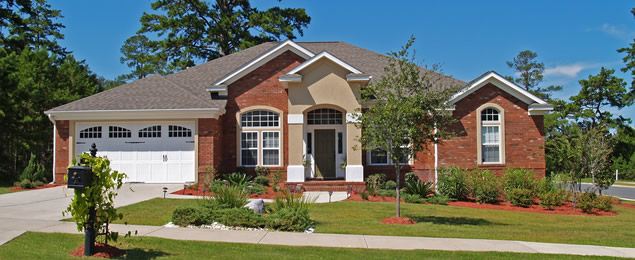More spec homes coming for entry-level buyers

WASHINGTON – May 12, 2017 – In the 10 years since the housing crash, builders have waited to start construction until they had a signed contract in hand. But spec homes – pre-constructed property that they can sell immediately – may be coming back, particularly in the entry-level market.
«There’s very strong demand for specs, but it’s not because people want a spec-finished home,» says Alan Ratner, director of home building research at Zelman and Associates. «It’s because they want an entry-level home.»
Entry-level buyers are gradually venturing into the market. First-time buyers comprised 35 percent of home buyers in 2016, a 10 percent jump over the previous year, according to the National Association of Realtors® (NAR). Seventy-two percent of buyers under the age of 36 years old purchased homes below $300,000; 67 percent of buyers aged 52 to 61 purchased at that amount; and 69 percent of those aged 62 to 70 did so, according to NAR’s 2017 Generational Trends report.
LGI Homes, for example, started offering quick-delivery homes in 2016. The builder targets the entry-level market with an average home price of $208,000. LGI Homes posted a 22 percent spike in home closings last year, and a record high of 467 closings in December. CEO Eric Lipar said in a fourth-quarter LGI earnings call that the appetite for spec homes is high.
D.R. Horton, the nation’s largest builder in closings, is finding greater business too in its entry-level Express Homes line. That segment features homes priced between $120,000 to $150,000. COO Michael Murray estimates 70 percent to 80 percent of the company’s sales are supported by spec homes now.
«If you look at the number of homes sold, 85 percent of them are resales, used homes, and another very important part of our sales equation is Realtors,» says CEO David Auld. «Outside Realtors are a huge part of our sales efforts, and our spec program keeps those relationships engaged and mutually benefiting.»
While built-to-order homes tend to have higher margins, builders believe there’s a spot for spec homes again in the market as well. One benefit to spec homes for builders is they tend to offer a faster conversion cycle.
«Entry-level homes have lower margins because the buyers are adding fewer, if any, upgrades,» says Alan Ratner, director of home building research at Zelman and Associates. «The way you hit your return threshold is a much stronger absorption sales pace, and the way you do that is you churn and burn through it by building spec and selling them as quickly as possible.»
Selling homes later in the process can also help homebuilders better manage their costs too. They can increase the price later if materials or labor costs take up more of their budget, Ratner says. As long as the spec home sells before the construction is completed, the strategy is beneficial from a cash-flow perspective to builders, says Alan Laing, executive vice president of operations at Taylor Morrison.
Further, building on spec can help builders get ahead of the market or offer a more affordable project. However, they can run into problems if they end up having too many homes under construction or ready to sell.
Ratner notes that home building is cyclical and, in the past, an increase in completed spec homes usually coincided with an eventual pullback in the overall market. On the cusp of the Great Recession, for example, completed spec homes accounted for 51 percent of new-home sales in 2008.
Source: «The Return of Spec Building,» BUILDER (May 10, 2017)
© Copyright 2017 INFORMATION INC., Bethesda, MD (301) 215-4688